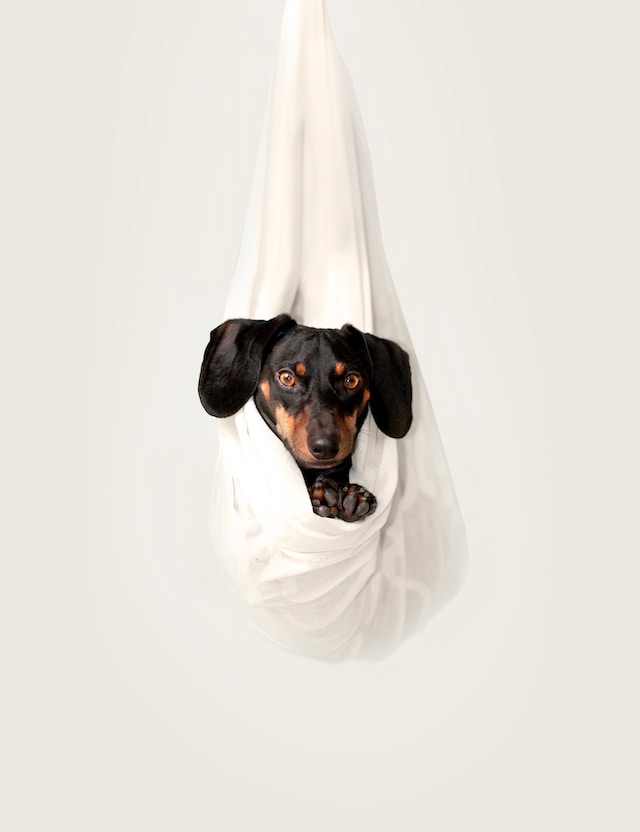Dachshund Puppies are intelligent but independent and stubborn, which can challenge training them. But with lots of positive reinforcement and consistency, you can train your pup to be well-behaved.
Start by teaching your dog the sit command. Say “Sit,” move the treat down and under their chest, and give verbal praise when they do this.
Socialize Your Pup
Dachshunds are curious dogs, so they must be exposed to many new people, animals, sights, and smells. This can be done with short visits to friends and family, puppy play dates, or taking them on a few dog-friendly car rides. If you are worried about your pup reacting to certain things, a professional dog trainer or veterinarian can give tips on easing their fears.
Your dachshund will need frequent bathroom breaks as a puppy since their bladders aren’t fully developed. It’s best to take them outside when they wake up, after a meal or snack, after playtime, and before bed. This way, they can use the bathroom inside the house. If they do have accidents, remember not to punish them. Rather than yelling at them, you can encourage them to use the outdoor bathroom by showering them with praise when they do their business outside.
During the puppy training, you should also teach your dachshund basic commands like “leave it” and “drop it.” These are valuable commands for helping keep them safe from picking up items they shouldn’t have, especially hazardous ones, and can save their lives in some situations. When teaching these commands, be patient and use positive reinforcement like treats to help get their attention.
Train Early
Training your dachshund to walk nicely beside you on a leash is a good idea. Start in a quiet area without distractions and work up to using it outdoors. You can also teach them to sit and stay, which is essential for their safety and yours.
Be consistent and firm with your puppy training but gentle. Miniature dachshund puppies can be willful but respond best to calm consistent discipline.
Teach your puppy basic commands like sit, stay, and come. Getting them to understand these early on will help you in the long run, especially if your dachshund becomes an adult and starts pulling when you go for walks.
Avoid punishing your dachshund for going to the bathroom in inappropriate places when house training. Punishment (staring disapprovingly, shaking your finger, making scolding noises, and rubbing their face in a mess) will only make them afraid to use the bathroom around you, which means they’ll be more likely to hide the situation and wait until you’re not looking to do it again.
Another vital training issue is teaching your puppy to stop biting people or things. Often, pups bite because they are exploring their mouths and trying to find out what they can do with them. It is a good idea to teach your puppy “bite inhibition” so that they learn that putting their teeth on things will not hurt them, but they can play and explore with their toys.
Keep Your Pup Healthy
Puppies go through a lot of sensory development during their first 3-4 weeks. During this time, they learn to walk, play, bite, hold their bladder, and interact with others. This is also when they are most vulnerable to infection, disease, and congenital disabilities.
Not disturbing a new puppy or its mother during this crucial period is essential. It’s also a good idea to have a safe way to transport your dachshund for walks, grooming, and veterinarian visits.
During these times, keeping your pup on a leash and within sight of you is essential. This will help to prevent her from getting into things she shouldn’t or jumping on and off furniture, decks, steps, etc. Jumping off these items can injure your doxie’s back and lead to pain in the future. Providing a dog ramp is an easy and effective way to prevent this injury.
During training time, use treats to keep your puppy interested in what you are doing with her. A high-value treat like hotdogs, cooked chicken, or freeze-dried lamb liver will make your training sessions fun and exciting for her. This will also help her to associate you with the command. Eventually, she will begin to come whenever you call her name, even if something much more interesting is going on around her.
Be Patient
It’s essential to be patient and to stick with the training process.
Deal with unwanted behaviours before they become habits. For example, if your puppy jumps on people when they come in, turn your back to them and ignore them instead of yelling or giving them attention. This will help them learn that jumping on people is not okay. Similarly, try to redirect her attention if your pup is chewing on something she should not be. Eventually, she will learn that it is not as fun to chew on the chair legs as she thought.
If you will teach your dog a cue such as “wait,” use it often. This will be helpful for when your pup is getting into things she shouldn’t, such as the counter (which you may need to keep off limits) or during mealtime when she wants more than her bowl can hold. When you give your puppy the “wait” command, tell her in a happy tone and give her a treat. Eventually, she will associate her recall with her dinner and come running when you call.
Be consistent with your training, and remember that the more you train, the better it will be. Keep training sessions short and sweet (5-10 minute sessions several times daily). Reward good behaviour with verbal and physical praise.

